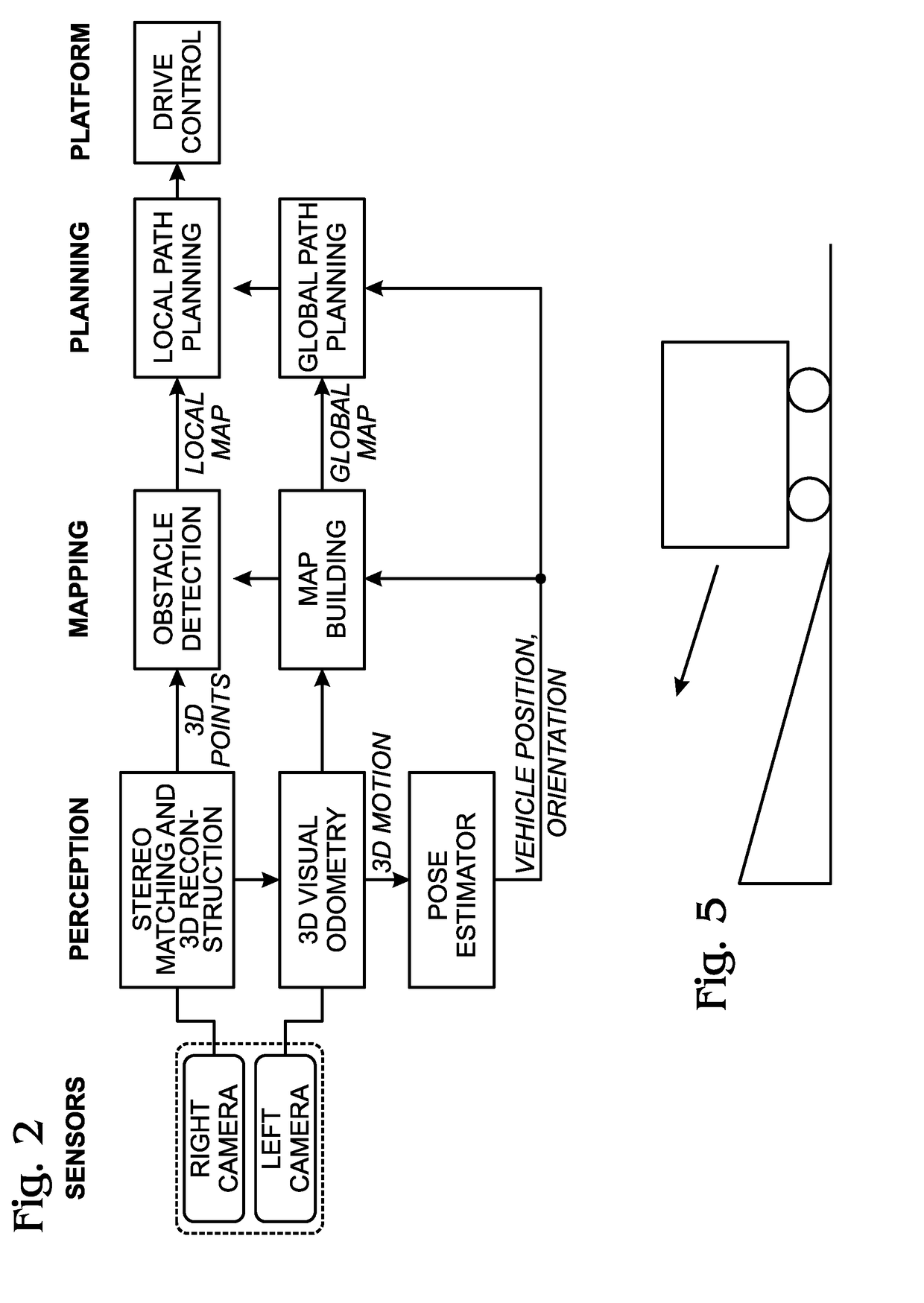Autonomous Navigation using Visual Odometry
a technology of visual odometry and autonomous navigation, applied in the field of visual odometry, can solve the problems of increasing the cost of robots, difficult to find a corresponding point viewed by one camera, and unaffordable household applications, and achieve the effect of reducing the cost of autonomous navigation
- Summary
- Abstract
- Description
- Claims
- Application Information
AI Technical Summary
Benefits of technology
Problems solved by technology
Method used
Image
Examples
Embodiment Construction
[0046]FIG. 1 is a schematic block diagram of a system for autonomously navigating a vehicle. The system 100 comprises a vehicle (robot) 102. A stereo camera 104, with a right camera 106 and a left camera 108, is mounted on the vehicle 102 and has an output on line 110 to supply image pairs. Each image pair includes a right image and a left image. The system 100 further comprises a processor 112 and a non-transitory memory 114. Residing in memory 114 is a stored vehicle pose 116, where a vehicle pose is defined herein as a position and orientation with respect to a coordinate frame. As described in more detail below, the coordinate frame may exist in a camera or world coordinate systems for example. A navigation application 118 is embedded in the non-transitory memory 114 and includes a sequence of processor executable instructions to perform the following functions. The navigation application 118 detects a plurality of matching feature points in a first matching image pair, and dete...
PUM
 Login to View More
Login to View More Abstract
Description
Claims
Application Information
 Login to View More
Login to View More - R&D
- Intellectual Property
- Life Sciences
- Materials
- Tech Scout
- Unparalleled Data Quality
- Higher Quality Content
- 60% Fewer Hallucinations
Browse by: Latest US Patents, China's latest patents, Technical Efficacy Thesaurus, Application Domain, Technology Topic, Popular Technical Reports.
© 2025 PatSnap. All rights reserved.Legal|Privacy policy|Modern Slavery Act Transparency Statement|Sitemap|About US| Contact US: help@patsnap.com



